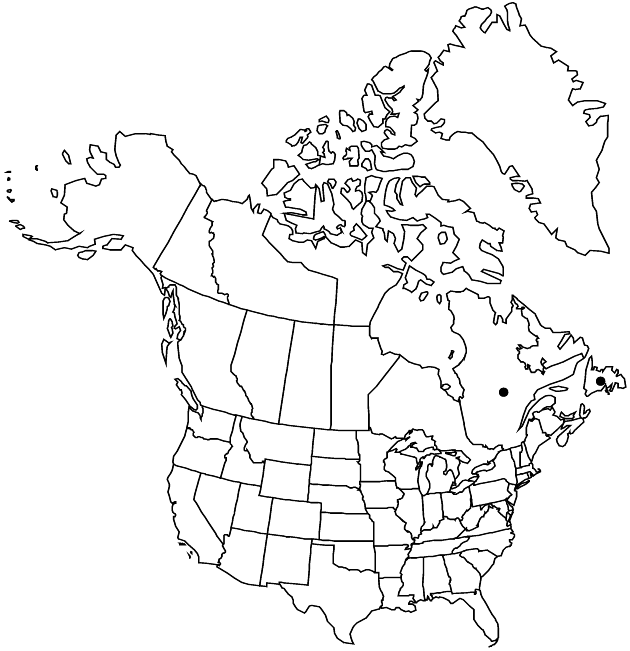Taraxacum laurentianum
Rhodora 35: 375, plate 272, figs. 5–9. 1933.
Plants 10–42 cm; taproots branched. Stems 1–5+, erect to ascending, purplish, (usually exceeding leaves), glabrate to sparsely villous, sometimes more densely so distally. Leaves 5–10+; usually erect, sometimes patent; sessile to ± broadly winged-petiolate; blades oblanceolate (some younger leaves ± runcinate at least proximally), 10–30 × 2–4 cm, bases cuneate to attenuate, margins sometimes ± deeply lobed (younger leaves), usually toothed, larger teeth well developed, lobelike, retrorse to antrorse, lanceolate to triangular or sometimes deltate, sometimes double, acuminate, apices obtuse, faces adaxially sparsely pilose or glabrate (denser on midveins), abaxially glabrous or glabrate. Calyculi 15–18, ascending, later spreading and recurving, greenish or purplish, broadly lanceolate to narrowly ovate (herbaceous) bractlets in 2–3 series, 15–21 × 3.5–5.5 mm, margins hyaline, often purplish, narrowly scarious, apices long to short-acuminate, strongly horned, tips purplish, scarious, erose. Involucres green, broadly campanulate, 18–26 mm. Phyllaries 18–25 in 2 series, lanceolate (outer) to ovatelanceolate (inner), 2.5–5.2 mm wide, margins scarious narrowly or not (outer) to broadly so proximally and narrowly distally (inner), apices long-acuminate (sometimes tapered), strongly horned, tips scarious, purplish black, erose. Florets ca. 150+; corollas yellow (abaxially gray-striped, becoming purplish in drying), 14–25 × 0.8–1.5+ mm. Cypselae grayish-olivaceous to tan or olivaceous straw, bodies oblanceoloid to obovoid, 3.2–4 mm, cones narrowly conic, 0.9–1.2 mm, beaks slender, 10–17 mm, ribs 5 (wide) –14 (narrow), faces proximally ± tuberculate (sometimes ribs smooth), muricate in distal 1/3–1/2; pappi creamy, 8–9.5 mm. 2n = 40 [unpublished].
Phenology: Flowering summer.
Habitat: Calcareous, seashore meadows and gravelly seashores (coastal), turfy areas of seaside taluses, sandy riverside meadows in boreal forest zone
Elevation: 0–5 m
Distribution

Nfld. and Labr. (Nfld.), Que.
Discussion
Of conservation concern.
Though very similar to Taraxacum ceratophorum, this Gulf of St. Lawrence endemic stands out by its statistically significantly larger heads and other parts (L. Brouillet, unpubl. data). It also occupies a habitat atypical of normal T. ceratophorum in the area. It is possible that the species is under threat from its introduced congener T. officinale, and from human activities in its fragile, easily disturbed coastal habitat.
Selected References
None.
Lower Taxa
"fine" is not a number.